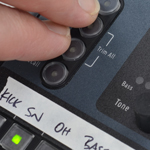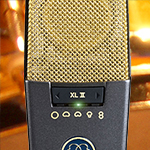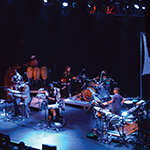Dante Workflow

An Aviom personal mixing system is powerful and flexible when configured with a Dante network as its input source.
But setting up a Dante network can sometimes be confusing to those new to the Dante workflow. Unlike when using analog inputs or an A-Net digital console card such as the Y1 card for Yamaha consoles, there is no default or automatic patching in a Dante network.
A Dante network can have an almost unlimited number of devices connected. Channel patching can be done one channel at a time, and each source may be sent to multiple destinations. Note that you may need to use a gigabit network switch to facilitate network connections.
Workflow
In a Dante network with a single FOH mixing console, an Aviom Dante-enabled A-Net Distributor, and some Personal Mixers on stage, the typical workflow would look something like this:
- Audio sources are connected to the mixing console.
- A Dante interface is installed in the digital mixing console (or is available as a built-in routing option).
- The digital mixing console is connected to a D400-Dante or D800-Dante A-Net Distributor with a network cable.
- A Mac or PC computer is connected to the network so that the Dante Controller software can be used to patch channels.

The signal flows from the analog source at the mixer input, to the Dante network, to the D400-Dante, and finally as A-Net to the Personal Mixer
If you’re using a network switch, connect the console, A-Net Distributor, and Mac/PC to the switch. The diagram above shows a simple daisy chain setup.
At this point the Dante network is connected and the devices themselves can communicate. Channels may be patched to any device operating at the same sample rate. But it’s important to note that no actual audio channels are flowing between the devices yet. There are two sets of patches that must be made. And that means you’ll need to understand how patching works for the three manufacturer’s products you are now connecting: your mixing console, Audinate (creators of Dante), and Aviom.
Patching in the Mixing Console
The first patch to be made is in the mixing console—the source audio channels must be sent into the Dante network. Let’s use the first channel of the mixing console as an example and follow its patching through the network to a Personal Mixer. The mixing console’s first channel for our example has a piano on it. You can hear the piano in the mixing console’s headphones and/or in the front-of-house mix by raising its fader. To route that piano sound to the Dante network, you need to patch the direct output of the channel to the mixing console’s Dante output (or Dante expansion card) and then activate the direct output send. For simplicity, assign the mixing console’s channel #1 (the piano) to the Dante network’s channel #1.
Patching in Dante Controller
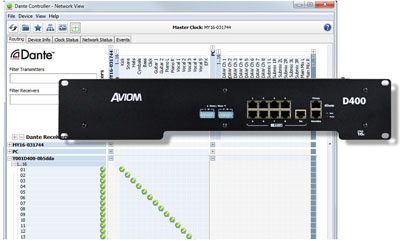
The second patch takes an available Dante resource in the Dante network (the piano from the mixing console that was just assigned in the previous step) and transmits it to a Dante device capable of receiving it (a D400-Dante or D800-Dante A-Net Distributor). In the Dante Controller Routing tab, click at the intersection of where the transmitter device and receiving device meet; Dante makes the digital connection. (The Dante Controller software refers to a virtual patch from a transmitting device to a receiving device as a ‘subscription.’) You’ll see a green circle with a check mark confirming that the subscription is valid.
Time to Mix
Now you can listen to that piano channel in a Personal Mixer. Raise the Personal Mixer’s channel #1 volume and then set a comfortable listening level with the master volume control. That’s it; the channels are patched from the mixing console to the Dante network and on through to the Personal Mixer. Simply repeat this patching process for as many channels as you need for your application.
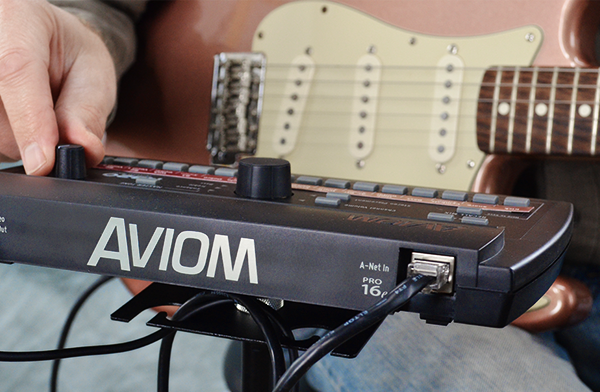
It is likely that you can also patch sub-mixes, aux sends, groups, etc., into the Dante network as well as the simple direct outputs used in this example. Refer to your mixing console’s documentation for more on that subject.
Once the Dante patches are made, the computer can be eliminated from the setup if desired. Dante devices remember their patching across power cycles.
Additional Resources
- Troubleshooting your Dante network
- Dante firmware updates

